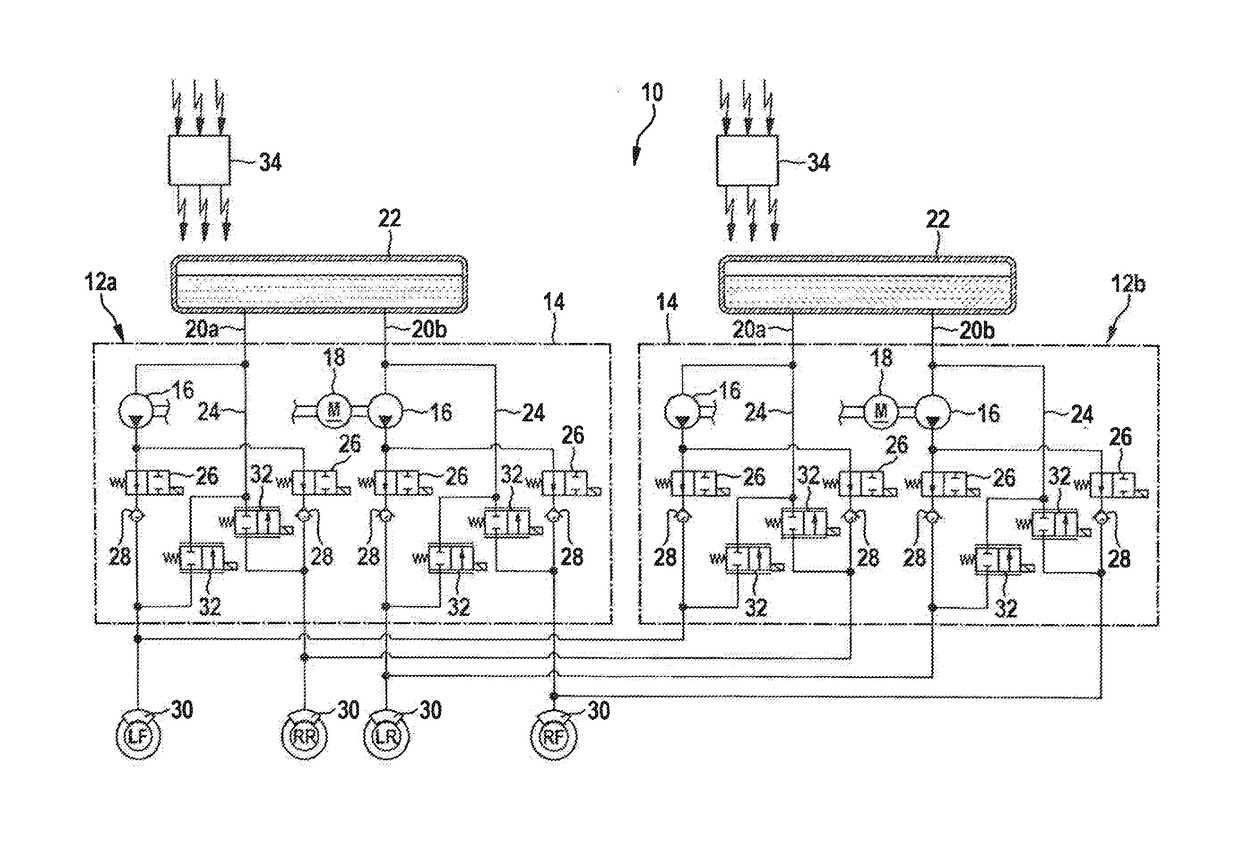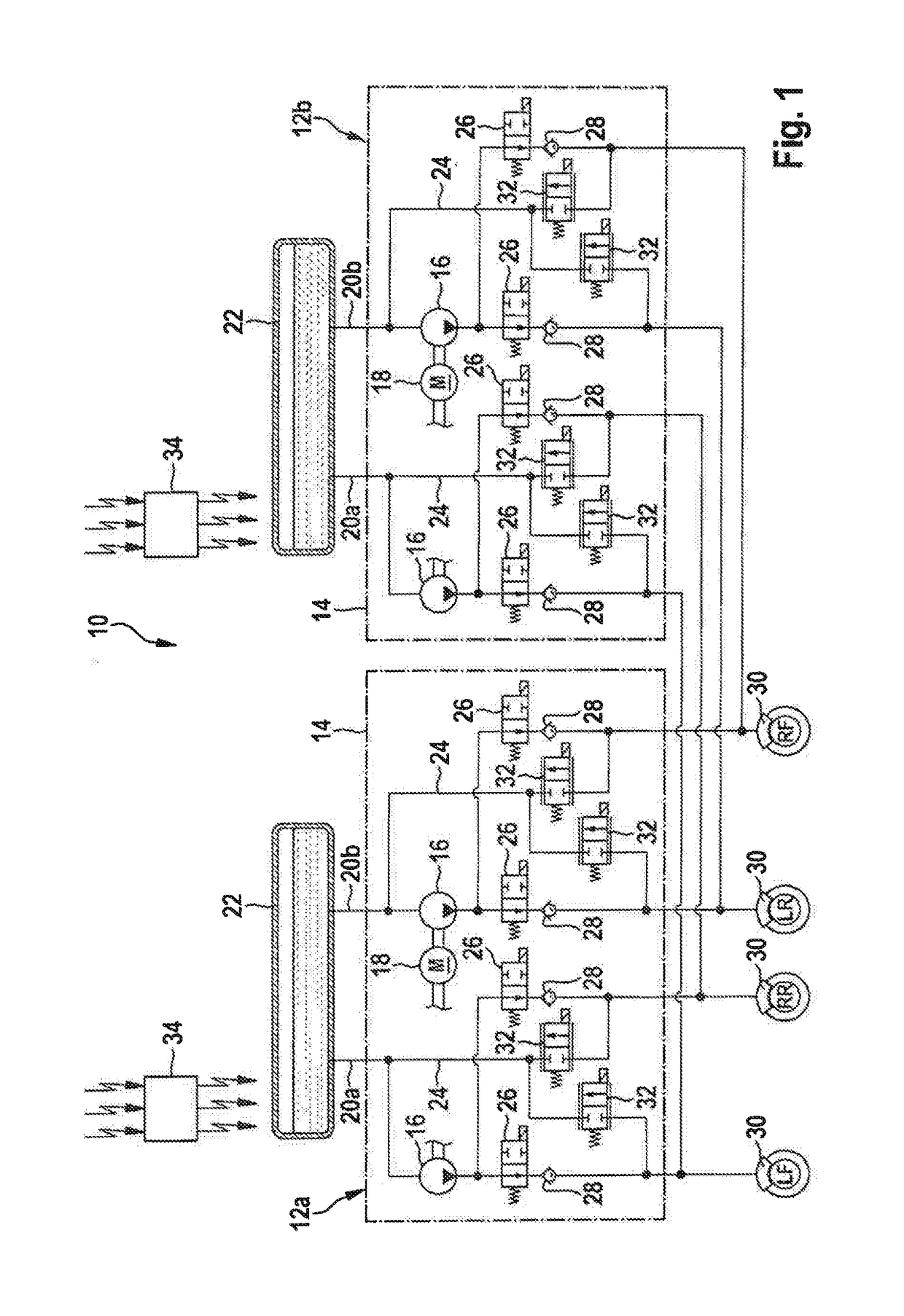Electronically pressure-controllable braking system and methods for controlling an electronically pressure-controllable braking system
a technology of electronic pressure control and braking system, which is applied in the direction of braking system, asr control system, braking components, etc., can solve the problems of increased construction costs, increased space requirements, and inability to assume passenger emergency situations, so as to reduce load and cost, the effect of reducing costs
- Summary
- Abstract
- Description
- Claims
- Application Information
AI Technical Summary
Benefits of technology
Problems solved by technology
Method used
Image
Examples
Embodiment Construction
[0018]The electronically pressure-controllable braking system 10 is made up of a pressure medium unit 12, which is subdivided into a total of two subunits 12a, 12b. Both subunits 12a, 12b are identically constructed so that the further explanations can be limited to subunit 12a.
[0019]Subunit 12a comprises a so-called pump housing 14, which is equipped with electronically controllable, pressure medium-controlling components. Two pumps 16 shall be mentioned in this respect, which are operable by a common drive motor 18. Pumps 16 may alternatively be a single-piston pump or a multi-piston pump, or even a gear pump or the like. Each pump 16 supplies an associated brake circuit 20a, 20b with pressure medium and for this purpose is in direct connection on its intake side with an externally situated reservoir 22, which is in contact with pump housing 14, and parallel thereto with a return line 24 of brake circuit 20. A pressure side of pump 16 is connected respectively via one intake valv...
PUM
 Login to View More
Login to View More Abstract
Description
Claims
Application Information
 Login to View More
Login to View More - R&D
- Intellectual Property
- Life Sciences
- Materials
- Tech Scout
- Unparalleled Data Quality
- Higher Quality Content
- 60% Fewer Hallucinations
Browse by: Latest US Patents, China's latest patents, Technical Efficacy Thesaurus, Application Domain, Technology Topic, Popular Technical Reports.
© 2025 PatSnap. All rights reserved.Legal|Privacy policy|Modern Slavery Act Transparency Statement|Sitemap|About US| Contact US: help@patsnap.com



